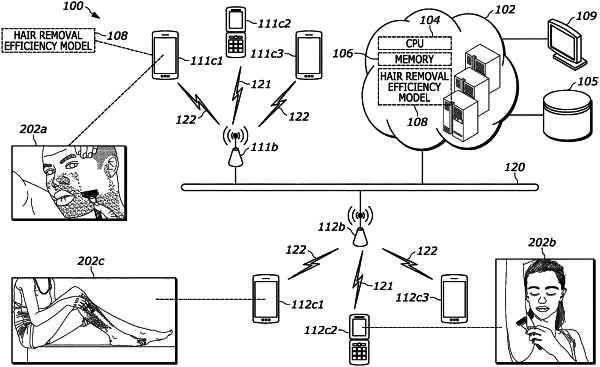| CPC G06T 7/0014 (2013.01) [G16H 10/60 (2018.01); G16H 50/20 (2018.01); G06T 2207/20081 (2013.01); G06T 2207/20084 (2013.01); G06T 2207/30088 (2013.01)] | 25 Claims |

|
1. A digital imaging method of analyzing pixel data of at least one image of a user's body for determining a user-specific hair removal efficiency value after removing hair, the digital imaging method comprising the steps of:
aggregating, at one or more processors communicatively coupled to one or more memories, a plurality of training images of a plurality of individuals after removing hair, each of the training images comprising pixel data of a respective individual's body or body area after removing hair;
training, by the one or more processors, with the pixel data of the plurality of training images, a hair removal efficiency model operable to determine hair removal efficiency values associated with a degree of hair removal efficiencies ranging from a least efficient to a most efficient;
receiving, at the one or more processors at least one image of a user, the at least one image captured by a digital camera, and the at least one image comprising pixel data of the user's body or body area after removing hair;
analyzing by the hair removal efficiency model executing on the one or more processors, the at least one image captured by the digital camera to determine a user-specific hair removal efficiency value;
generating, by the one or more processors, based on the user-specific hair removal efficiency value, at least one user-specific electronic recommendation designed to address at least one feature identifiable within the pixel data of the user's body or body area; and
rendering, on a display screen of a user computing device, the at least one user-specific electronic recommendation.
|